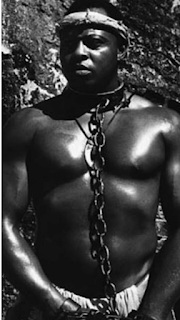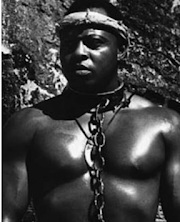Roque Jose Florencio: The story of a sex slave who fathered over 200 children

The brutal story of Pata Seca, the slave chosen to reproduce: he had more than 200 children
The name of Roque José Florencio, known as Pata Seca, has emerged from the shadows of history, unearthing a story of exploitation and horror that has shaken social networks in recent times.
The name of Roque José Florencio, known as Pata Seca, has emerged from the shadows of history, unearthing a story of exploitation and horror that has shaken social networks in recent times. This man, a Brazilian slave whose imposing physique made him a singular object of exploitation, has sparked a debate about slavery in Brazil and its terrible consequences.
Born in 1828, the existence of Pata Seca has become a viral story, although the reality behind his legend is considerably different from what has been disclosed. Unlike the labor exploitation common among slaves, this man was not forced to work, but to reproduce. Endowed with an imposing physical constitution, with more than two meters in height and formidable muscles for his time, he was used by his slave owners as a means to father children who would inherit his physical attributes, turning them into future workforce.
The most heartbreaking story of his life reveals that Pata Seca was subjected to having sexual relations with hundreds of women every month, without having the right to refuse. This torment, an egregious abuse of power by their owners, painted a story of unimaginable cruelty in pursuit of the reproduction of a line of robust slaves.
While the slavery narrative primarily evokes images of Europe and the United States, Brazil’s history is intertwined with approximately 350 years of slavery, being a fundamental pillar of its economy and exporting slaves to the United States.
However, the enigmatic history of Pata Seca is not limited to its exploitation. His death certificate, dated 1958, would suggest a longevity of 130 years, an almost impossible fact. Even more intriguing is the record that he achieved freedom at the end of his days, adding an additional nuance of uncertainty to his legacy.
Beyond the veracity of their individual history, there is documented evidence that many slaves were used to procreate and generate offspring, particularly those physically stronger men.
The shadow of Pata Seca sheds light on a dark and heartbreaking chapter in the history of slavery in Brazil, reminding us of the ruthless exploitation to which many individuals were subjected, torn from their most fundamental rights in an era stained by inhumanity and injustice.
FAQ: The Story of Roque José Florencio, Known as Pata Seca
1. Who was Roque José Florencio (Pata Seca)?
Roque José Florencio, also known as Pata Seca, was a Brazilian slave born in 1828. He was exploited for his physical attributes, particularly his height (over two meters) and muscular build, which his slave owners valued for reproduction.
2. Why is his story significant?
Pata Seca’s story highlights a lesser-known aspect of slavery in Brazil: the forced reproduction of slaves to create a robust future workforce. His life exemplifies the unimaginable cruelty and exploitation slaves endured.
3. How was Pata Seca exploited?
Unlike other slaves who were forced into physical labor, Pata Seca was used to father children. He was compelled to have sexual relations with hundreds of women, with no right to refuse.
4. How many children did Pata Seca father?
It is believed that he fathered over 200 children, with the intention that his offspring would inherit his physical strength and become valuable laborers.
5. What does his death certificate reveal?
Pata Seca’s death certificate, dated 1958, indicates he lived to the age of 130, a claim that has sparked skepticism due to its improbability. The document also notes that he achieved freedom before his death, adding an intriguing layer to his story.
6. What does Pata Seca’s story reveal about slavery in Brazil?
His story sheds light on the brutal and systematic exploitation of slaves in Brazil. Brazil relied on slavery for approximately 350 years, using it as a foundation for its economy and even exporting slaves to other countries, including the United States.
7. Is Pata Seca’s story fully verified?
While Pata Seca’s story has become viral, some details remain unverified or are part of legend. However, there is documented evidence that slaves with strong physical attributes were often forced into reproduction.
8. Why is his story important today?
The story of Pata Seca serves as a reminder of the inhumanity of slavery and the lasting scars it left on society. It has sparked conversations about historical injustices and the importance of remembering the dark chapters of history to prevent their repetition.
9. What does “Pata Seca” mean?
“Pata Seca” translates to “Dry Foot” in Portuguese. It was likely a nickname, though its origin and specific meaning in the context of Roque José Florencio’s life are unclear.
10. How has Pata Seca’s story impacted modern discussions?
The resurfacing of his story on social networks has prompted debates about slavery, its consequences, and the resilience of those who endured unimaginable hardships. It also underscores the need to address historical injustices and their lingering effects.

